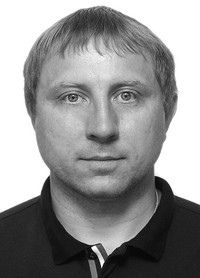PROSPECTS FOR USE OF STRENGTH EXERCISES UNDER UNSTABLE WORK POSTURE AS A METHOD OF INCREASING STRENGTH ABILITIES IN HIGHLY QUALIFIED BIATHLONISTS
Ключевые слова:
strength exercises, unstable support, electromyography, biathlon.Аннотация
Objective of the study was to reveal, on the basis of a theoretical analysis, training effects when using strength exercises in an unstable working posture and to evaluate the prospects for their use as a method of increasing the specific strength of highly qualified biathletes.
Methods and structure of the study. To solve the problems of the study, a systematic review and analysis of foreign scientific and methodological literature on the problems of strength training was carried out.
Results and conclusions. The obtained results of scientific work made it possible to single out as the most significant effects of neuromuscular adaptation when performing strength exercises in an unstable working posture, first of all, improvement of the reciprocal innervation of agonist-antagonists and synchronization of the activity of agonists, synergists and stabilizer muscles. In this regard, strength exercises performed under conditions of an unstable support or with weights that create a multidirectional instability of the movement trajectory can be considered as a promising methodological solution to the problem of increasing the strength abilities of highly qualified biathletes.
Библиографические ссылки
Bear M.F. et al. Neyronauki. Issledovaniye mozga, Sensornyye i dvigatelnyye sistemy [Neuroscience. Brain Research. Sensory and motor systems]. 4th ed. Vol. 2. Issmail T.V. [transl.]. K.: Publishing house Williams publ., 2021. 416 p.
Gazizov F.G. Obucheniye konkovym lyzhnym khodam [Training in skating skiing]. Teaching aid. Kazan, 2018. 50 p.
Laakksonen M.S., Johnson M., Holmberg H.K. Olimpiyskiy biatlon - posledniye dostizheniya i perspektivy posle Pkhenchkhana [Olympic biathlon - recent achievements and prospects after Pyeongchang]. Sovremennaya sistema sportivnoy podgotovki v biatlone [Modern system of sports training in biathlon]. Proceedings national scientific-practical conference, Omsk, April 18, 2019. pp. 130-137.
Linhard L. Neyroatletika dlya uluchsheniya sportivnykh rezultatov. Trenirovka nachinayetsya v mozge [Neuroathletics for improving athletic performance. Training starts in the brain]. Bochenkov O.V. [transl.]. Minsk: Popurri publ., 2021. 264 p.
Myakinchenko E.B., Kryuchkov A.S., Fomichenko T.G. Silovaya podgotovka sportsmenov vysokogo klassa v tsiklicheskikh vidakh sporta s preimushchestvennym proyavleniyem vynoslivosti [Strength training of high-class athletes in cyclic sports with a predominant manifestation of endurance]. Moscow: Sport publ., 2022. 280 p.
Novikova N.B., Zakharov G.G. Osobennosti sovremennoy tekhniki lyzhnykh khodov i metodicheskiye priyemy individualnoy korrektsii dvizheniy [Features of modern skiing technique and methodological methods of individual movement correction]. SPb. Nauchno-issled. in-t fizicheskoy kultury. 2017. 72 p.
Platonov V.N. Dvigatelnyye kachestva i fizicheskaya podgotovka sportsmenov [Motor qualities and physical training of athletes]. Moscow: Sport publ., 2019. 656 p.
Khalmanskikh A.V., Klykov V.N. Sovershenstvovaniye tekhnicheskoy podgotovlennosti biatlonistov na etape sportivnogo sovershenstvovaniya [Improving the technical readiness of biathletes at the stage of sports improvement]. Fizicheskaya kultura i sport: integratsiya nauki i praktiki [Physical culture and sport: integration of science and practice]. Proceedings International scientific-practical conference. Stavropol, 2016. pp. 125-153.
Behm D.G., Anderson K.G. The role of instability with resistance training // J. Strength Cond. Res. 2006. 20 (3):716–722.
Behm D., Colado J.C. The effectiveness of resistance training using unstable surfaces and devices for rehabilitation // Int J Sports Phys Ther. 2012;7(2):226-241.
Behm D. G., Muehlbauer T., Kibele A., Granacher U. Effects of strength training using unstable surfaces on strength, power and balance performance across the lifespan: a systematic review and meta-analysis. Sports medicine (Auckland, N.Z.), 2015. 45(12), pp.1645-1669.
Haff G.G. (2016) Periodization. In: G.G. Haff and N.T. Triplett, eds., Essentials of strength and conditioning, 4th ed. Champaign, IL: Human Kinetics. pp. 583-604.
Hoffman J.R. NSCAs Guide to Program Design. Human Kinetics. 2011. 325p.
Komi P.V. Strength and power in sport. Olympic book of sport medicine. Vol. III of the Encyclopedia of Sport Medicine. Blackwell Scientific Publications, 2002. 540p.
Komi P.V. Neuromuscular aspects of sport performance. Olympic book of sport medicine. Vol. XVII of the Encyclopedia of Sport Medicine. Blackwell Scientific Publications, 2011. 321p.
Nuzzo J.L., McCaulley G.O., Cormie P., Cavill M.J. and McBride, J.M. (2008). Trunk muscle activity during stability ball and free weight exercises. Journal of Strength and Conditioning Research, 22, pp.95-102.
Saeterbakken A.H., Andersen V., Behm D.G., Krohn-Hansen E.K., Smaamo M., Fimland M.S. Resistance-training exercises with different stability requirements: time course of task specificity. Eur J Appl Physiol, 2016. 116(11-12):2247-2256.
Zemková, E.; Jelen, M.; Cepková, A.; Uvacek, M. There Is No Cross Effect of Unstable Resistance Training on Power Produced during Stable Conditions. Appl. Sci. 2021, 11, 3401.

Дополнительные файлы
Опубликован
Как цитировать
Выпуск
Раздел
Лицензия

Это произведение доступно по лицензии Creative Commons «Attribution» («Атрибуция») 4.0 Всемирная.
